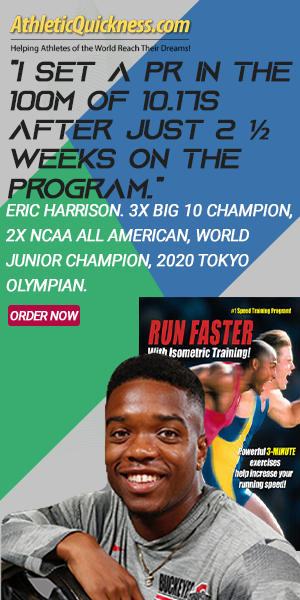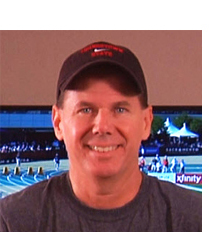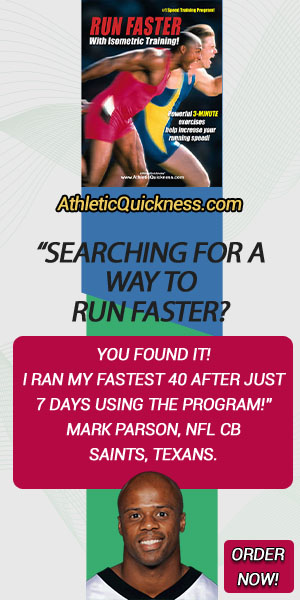Okay, so back to the role of the glutes/hams, quads and calves. See Figure 1.

I’ve mentioned several times already, that what everyone typically tells me they think these muscles do, is simply “push the body forward” when we run, and I have this illustrated with a white horizontal arrow as shown in Figure 2.

Now, I know some of the more astute people on this subject, like to talk about their also being a vertical component to this pushing force, portrayed by this red arrow in Figure 3

and yes, they are correct; there are both horizontal and vertical components to this force, and the vertical component is necessary to help launch us off the ground.
However, the way I am using the phrase, “push the body forward” in this video, takes both of these directional forces into account and so it’s going to be much easier for you to follow what I have to say, if I simply show the net result of these two with just one simple horizontal white arrow, so, keep that in mind.
Now, with regards to this pushing force coming from her right leg, I want you to imagine for a moment this is the only force acting on her body. So, nothing else is taking place. The other leg isn’t involved and neither are her arms. See Figure 4.
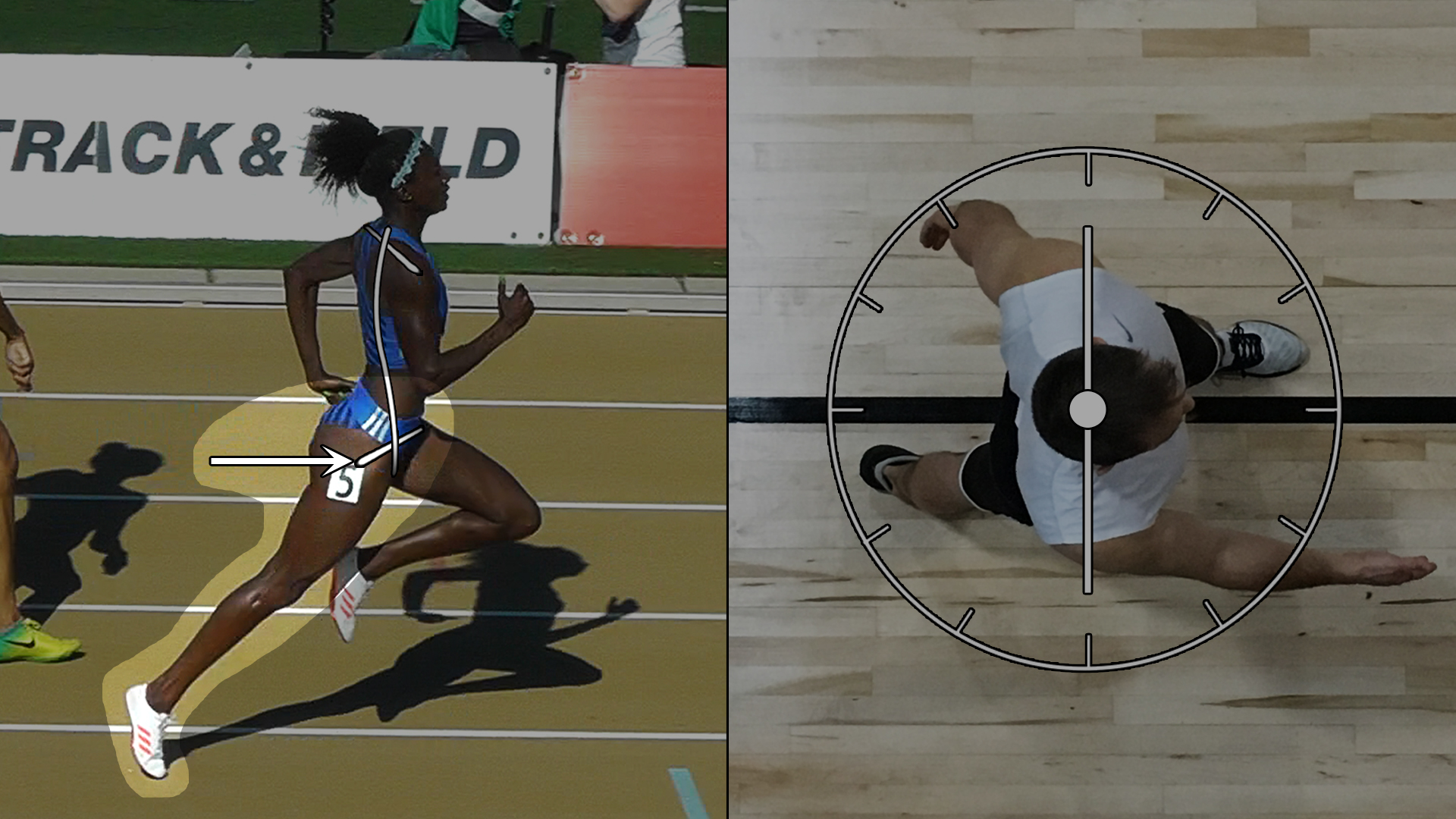
And, if it was the only force, do you think the effect of it would be to simply push her entire body straight ahead, or, do you think there might also be some additional reaction?
Well, before you answer that, consider this: what if we just slid this same force over to a place, say, directly behind her midline, like this in Figure 5 below.
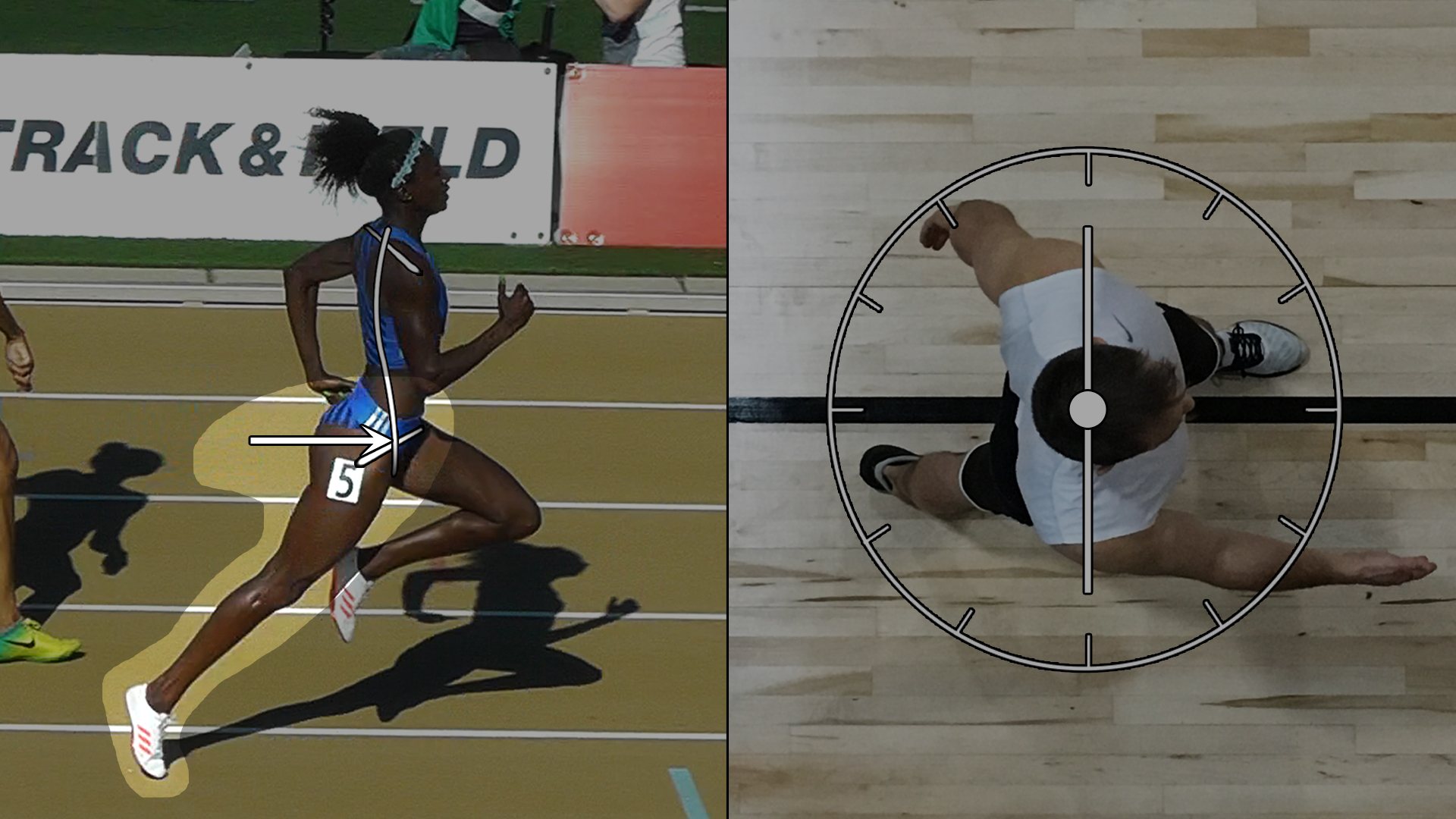
Do you think it would have the same effect on her body as the one we just showed behind her right hip? And if not, what would be different?
The answer is no, the force acting directly behind her midline (back in Figure 5) would not have the same effect on her body as the one behind her right hip (back in Figure 4) 4 and the difference would be this midline force (Figure 5) , could only propel her body straight ahead because her center of gravity also falls along this line and so she couldn’t go any direction other than straight as seen by these additional arrows shown in Figure 6 below.

And, this is similar to the force applied to the central axis of a clock like a showed you earlier where no rotation, or torque could be produced. See Figure 6 above. And, hopefully you understood that since the same principle is being applied, here.
So, a force being transmitted through the hip joint when she is running, which is several inches away from her midline, is different, and would not only push her forward, but, would also cause her body to twist, or, rotate. See Figure 7.

It would have to because, again, it does not fall along the midline where her center of gravity is. So, if she does rotate, the question then, is, which direction would it be? Clockwise, or, counterclockwise? To help you see this better, let’s look at this from above on our male athlete.
The same force on our female athlete pushing through her right hip joint can also be shown on our male athlete, here in Figure 8.

and as it comes in contact with the vertical line, now representing the level of his hips, which I will go ahead and change the entire line to look more like the hands of a clock for no other reason than I want you to be able to relate this concept of rotation to something you should already be familiar with, that of course being an actual clock…so, as the force comes in contact with this line seen Figure 9 below,

it will cause it to rotate in the, what direction? Care to take a guess? If you said counterclockwise, then congratulations, you are correct and let’s show it by the direction of this arrow seen in Figure 10.

This is the very definition of the word torque…a force (in this case, that being the one created by the glutes/hams, quads and calves), acting on an object…that being our hip joint, that causes it to rotate around a central axis…that being the midline of the body.
And now let’s go ahead and place the corresponding counterclockwise arrow showing this torque on our female athlete in Figure 11 below, and hopefully now you can start to visualize it taking place a little better on her.

So, there you have it, the role of the glutes/hams, quads and calves is not only to provide a pushing force, forward, like many of you may have probably assumed that’s all they ever did, but to also provide a rotational force, or, torque across the front of the body which is something I am quite certain none of you have ever considered, before.
Now, before moving on to the next torque, I would imagine you already have a few questions for me from what we just covered. So, I want to assure you that not only am I aware of most of the ones people have asked me at this point in the past, but also, I intend to address them with you in this session at the appropriate time.
So, I am going to hold off in trying to answer some of them right now because I think once you see the remaining four torques, many of your questions will automatically be answered, and with that, let’s move on to torque #2.

